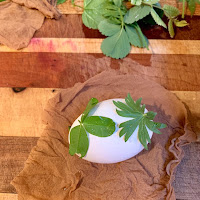Distance Learning Art Class, March 2020 Art Blog

Shelter-in-Place When Life Gives You Lemons Make Art I felt the need to share with my community simple art lessons for adults and kids with materials they might have at home in their kitchens and home offices. I was doing this on my own not as a school related activity. I have received lots of positive feedback and requests to open these classes for the entire school community and beyond. For the duration of the school closure I am planning to live-steam visual arts classes on Facebook every Tuesday and Thursday at 10:00 am PST. If you would like to tune in to my live-streams you may follow me on Facebook and Instagram @Barbara Libby-Steinmann. It takes lots of courage to brave the live-steam and virtual teaching world. The learning curve is high and frustrating at times. In a sense, this has become my own personal professional development from home. If you are not a Facebook user here are the links to see the art classes on youtube. In order not mi...



